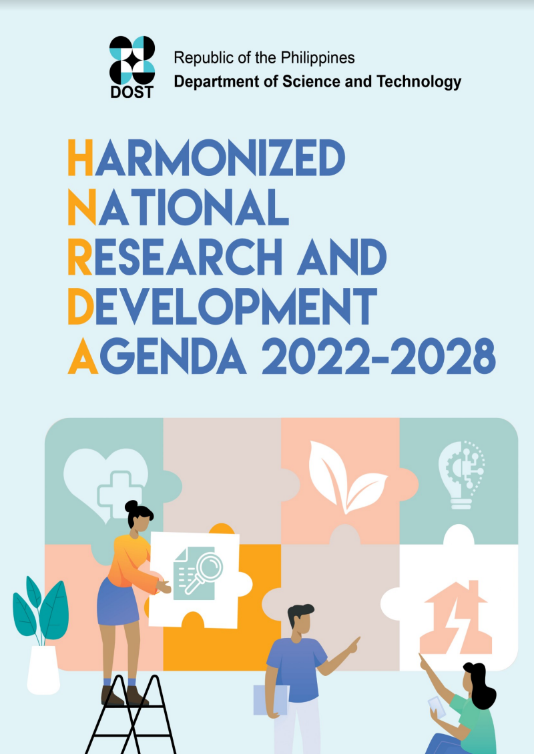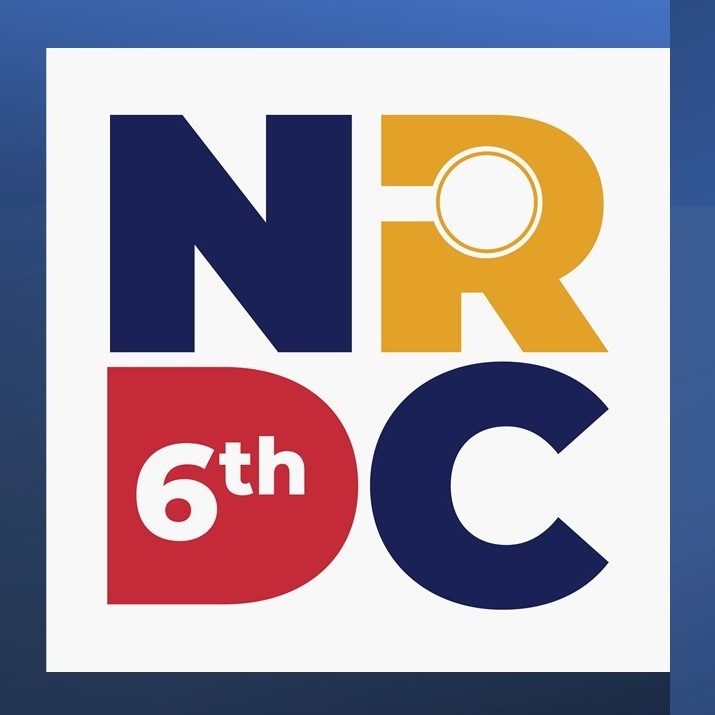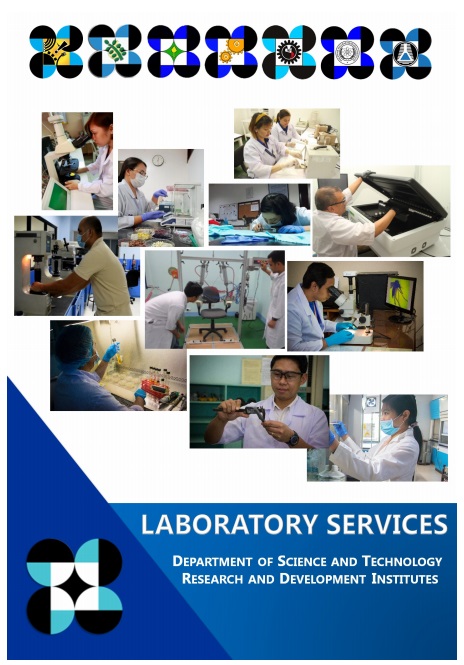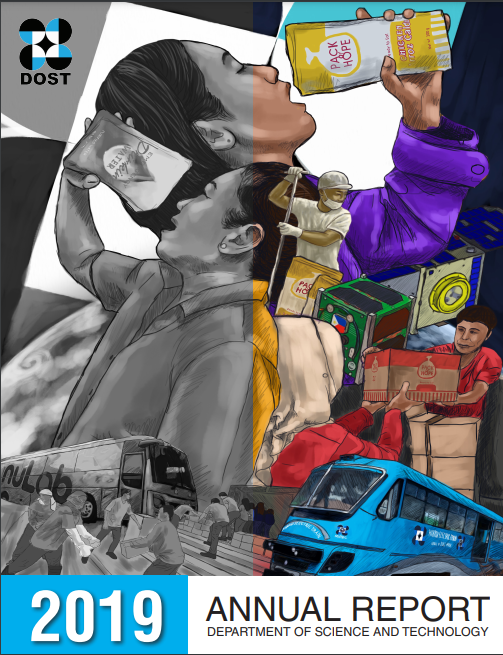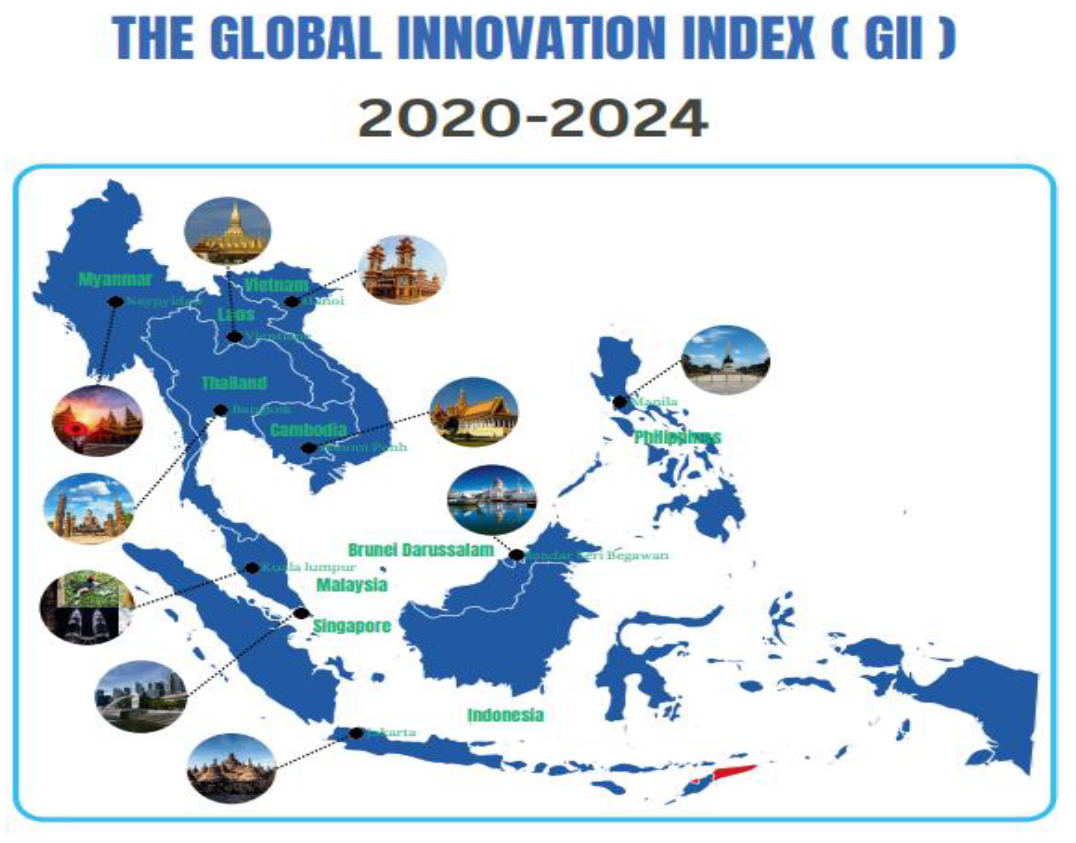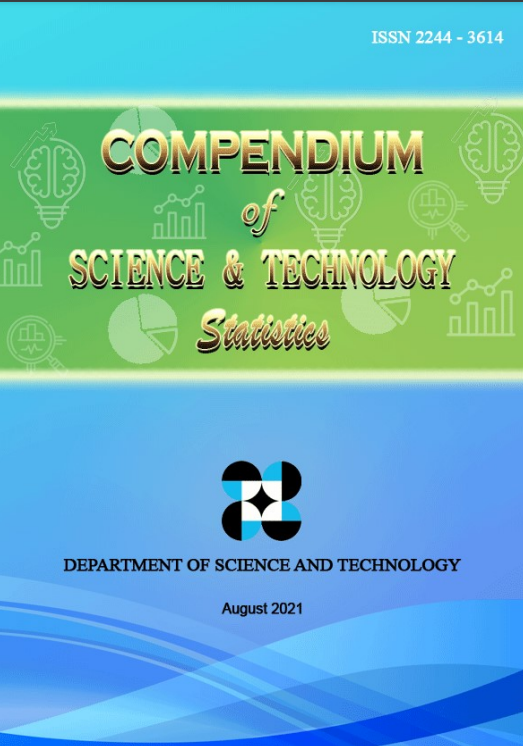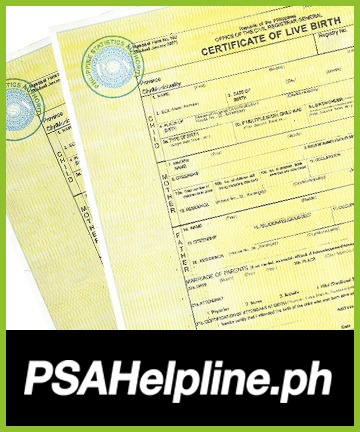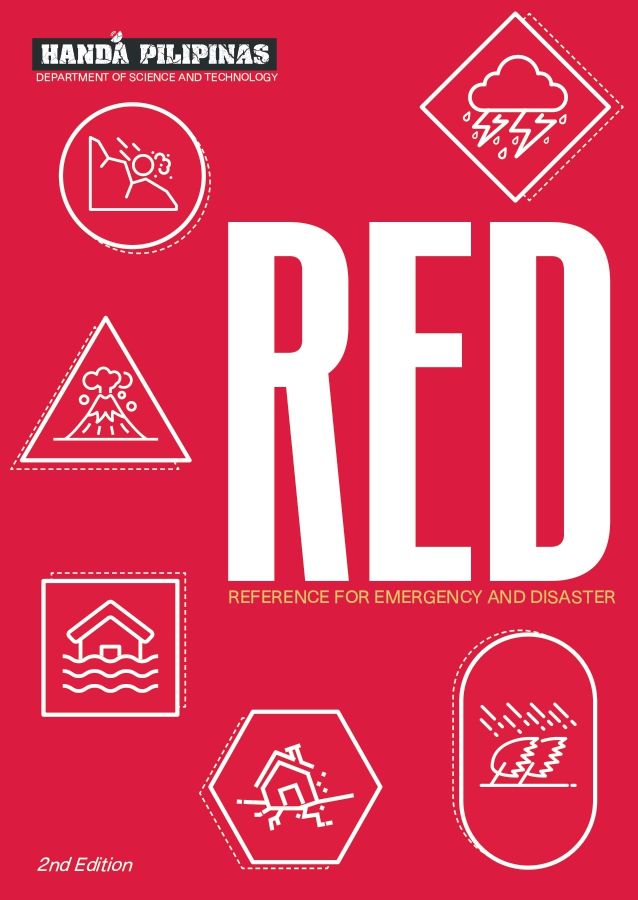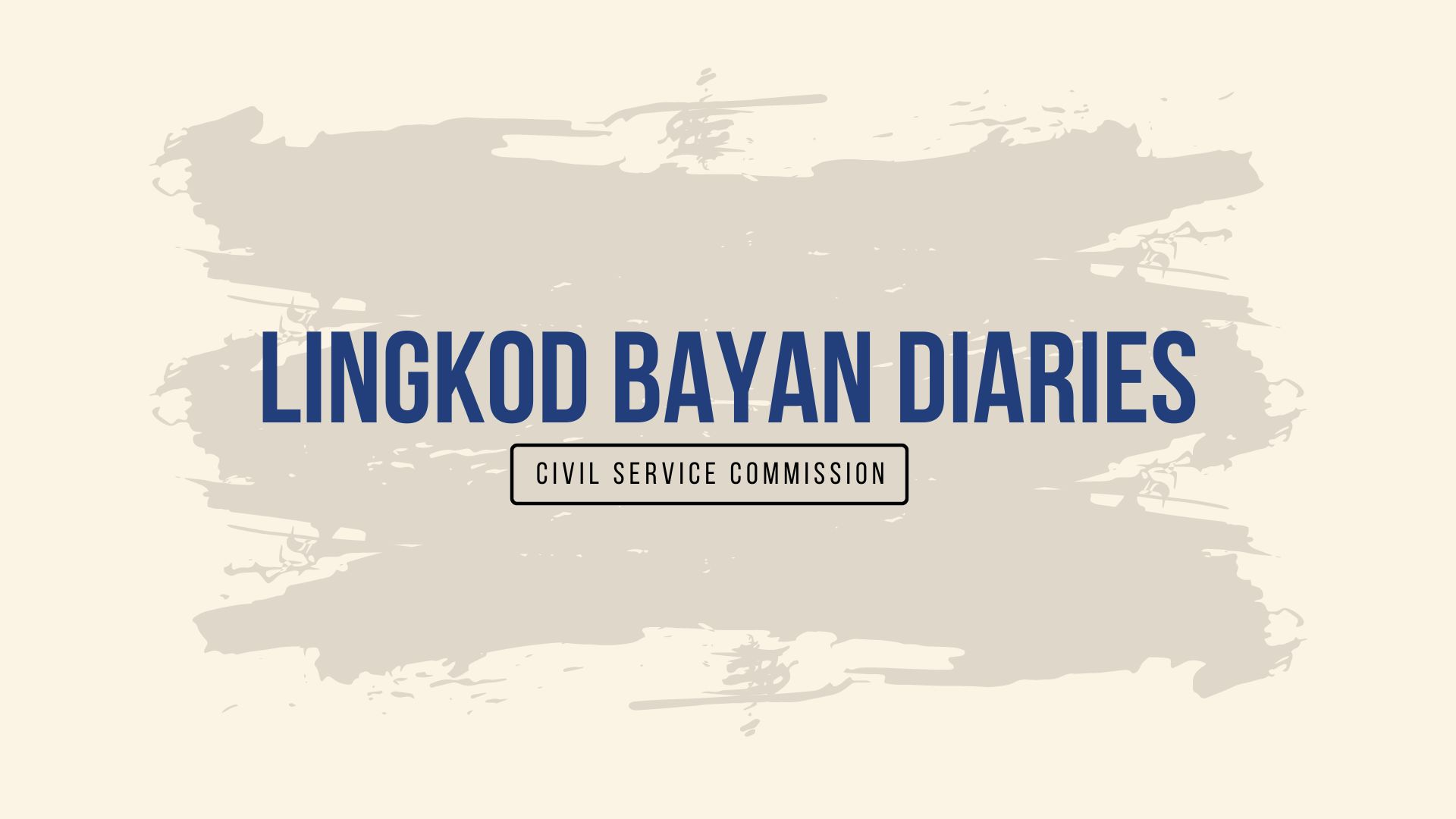- Details
- Hits: 199938
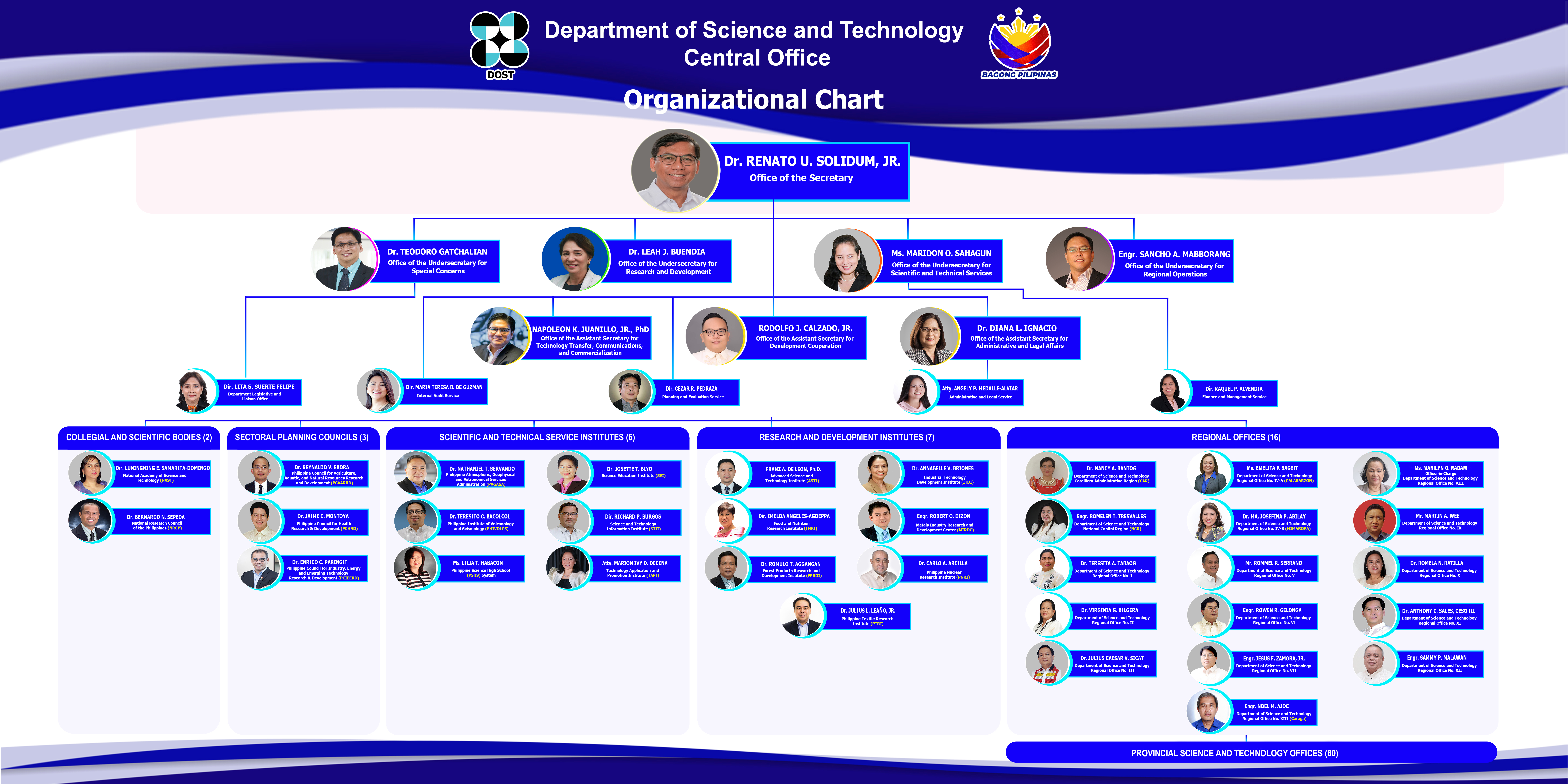
1.0 OFFICE OF THE SECRETARY
The Department of Science and Technology, through the Office of the Secretary (DOST-OSEC), supervises the Department, Attached Agencies, Councils and Institutes in the exercise of the mandate and discharge of their powers and functions; Advises the President on matters pertaining to science & technology; Establishes policies and standards for the operation of the Department pursuant to approved programs of the government; Promulgates rules and regulation necessary to carry out S&T objectives, policies, functions, plans, programs and projects; Chairs the S&T Governing Councils and the Philippine Science High School Board of Trustees.
1.1 PLANNING AND EVALUATION SERVICE (PES)
Section 11(a) of Executive Order No. 128 provides: “Planning and Evaluation Service, which shall be responsible for providing the Authority with efficient and effective services relating to planning, programs and project monitoring and development.” The Planning and Evaluation Service (PES) is headed by a Director and supervises the four (4) divisions namely: Policy Development and Planning Division (PDPD), Program Coordination and Monitoring Division (PCMD), S&T Resource Assessment and Evaluation Division (STRAED) and Information Technology Division (ITD).
1.1.A Policy Development and Planning Division (PDPD)
The Policy Development and Planning Division, headed by a Planning Officer V, has the following functions: (a) formulates science, technology and innovation (STI) plans based on the country’s overall development vision; (b) undertakes continuing review of policies to ensure their conformity with national development plans, consistent with scientific requirements, relevance and desirability in the light of changing situations; (c) identifies and analyzes STI policy issues and directs research studies to formulate appropriate policy alternatives and recommendations; (d) provides information, recommendations and guidance on STI policy issues; and (e) plans the continuous improvement of the STI policy formulation framework and provides overall direction in the implementation and/or utilization of policy-oriented research studies.
1.1.B Program Coordination and Monitoring Division (PCMD)
The Program Coordination and Monitoring Division, headed by a Project Development Officer V, has the following functions: (a) monitor and evaluate performance of DOST agencies based on developed and identified major final outputs (MFO) and performance indicators; (b) evaluate and endorse project proposals to National Economic Development Authority (NEDA) for foreign assistance; (c) provide technical support to the analysis and preparation of the DOST-Wide budgetary proposal; (d) prepare DOST performance report and other pertinent DOST reports required by national authorities (e.g. OP-PMS, NEDA, Congress, Senate, DBM, DSWD, DOLE, TESDA, NAPC, etc.); and (e) coordinate the preparation/validation of the Public Investment Program (PIP).
1.1.C S&T Resource Assessment and Evaluation Division (STRAED)
The S&T Resource Assessment and Evaluation Division, headed by Planning Officer V, has the following functions: (a) develop the S&T and R&D Statistical System and generate basic data as basis for policy decisions and measures; (b) formulate the framework for S&T statistics and indicators and generates S&T indicators based on framework; (c) implement the periodic nationwide survey (every 2 years) of R&D expenditures and human resources as basis for white papers released by government on science and technology; (d) disseminates S&T/R&D statistics and indicators to S&T planners, policy makers and other stakeholders; (e) coordinate with local and foreign statistical bodies concerned with S&T statistics; and (f) update S&T and R&D statistics for Philippine Yearbook, World/Global Competitiveness Report, UNESCO Institute for Statistics and ASEAN S&T Indicators.
1.1.D Information Technology Division (ITD)
The Information Technology Division is tasked to: (a) administer, maintain and enhance existing network infrastructure, application systems, websites and other programs that serve as tools in the provision of information necessary for decision-making; (b) implement proper security measures to ensure the efficient operation of the available information-technology facilities; and, (c) formulate framework for the management information services, including but not limited to the DOST-CO Information Systems Strategic Plan (ISSP).
1.2 INTERNAL AUDIT SERVICE (IAS)
The Internal Audit Service (IAS) directly reports to the Department Secretary and advises on all matters relating to management control and operations audit of DOST and its agencies, conducts management and operations and determines the degree of compliance with laws, regulations, managerial policies, accountability measures, ethical standards and contractual obligations, and analyzes and evaluates management deficiencies and assists top management be recommending realistic courses of action in the form of internal audit recommendations. It is headed by a Director IV and consists of two (2) divisions - Operations Audit Division (OpAD) and Management Audit
Division (MAuD).
1.2.A Operations and Audit Division (OpAD)
Operations Audit Division (OpAD) is responsible for the evaluation of the outcome, output, process and input to determine whether government operations, programs, and projects are effective, efficient ethical and economical, which also involves the process of evaluating whether or not performance targets and expected results were achieved, by utilizing internal auditing methods. OpAD's audit is aimed at determining whether or not performance targets and expected results of the organization were achieved towards better public service.
1.2.B Management Audit Division (MAuD)
Management Audit Division (MAuD) is responsible for the review and appraisal of systems and procedures, organizational structures, asset management practices, financial and management records, reports and performance standards, providing comprehensive and thorough examination of an organization or a specific or support system or work process, and involves conducting compliance audits and root cause analysis. MAuD audit is aimed at determining the effectiveness of the internal controls adapted in the operating and support services of the organization.
1.3 Disaster Risk Reduction and Climate Change Unit (DRRCCU)
The DRRCCU shall serve as the focal and coordinative unit for DRRM-related activities. The DRRCCU shall perform the following functions: (a) Provide DOST with effective and efficient services to achieve its strategic outcome of resilience to disaster risk and climate change, ensuring that hazard and risk research is supported in the harmonized national research and development agenda, the information generated and technologies developed reach the intended beneficiaries and stakeholders, and research results inform policies and legislations; and (b) Develop and recommend to the Executive Committee on DRR-CC matters to enhance DOST's resilience to disasters.
2.0 OFFICE OF THE UNDERSECRETARY FOR SCIENTIFIC AND TECHNICAL SERVICES (OUSEC-STS)
The Office of the Undersecretary for Scientific and Technical Services provides assistance to the Secretary in the following: (a) Formulation, implementation, monitoring, and evaluation of policies, plans, programs, and projects relative to S&T Human Resource Development, S&T services including the DOST-wide laboratory and testing services, and DOST System Capability Building Program; (b) Oversight supervision of six (6) S&T Service Institutes as follows: Science Education Institute (SEI), Science and Technology Information Institute (STII), Philippine Science High School (PSHS) System, Philippine Atmospheric, Geophysical and Astronomical Services Administration (PAGASA), Philippine Institute of Volcanology and Seismology (PHIVOLCS) and, Technology Application and Promotion Institute (TAPI); (c) Supervision of the Financial Management Service and Health Technology Assessment Division; d) Management of the Technology Resource Center (TRC) Winding Down of Operations; and (e) Other functions that may be assigned from time to time or as may be needed.
2.1 FINANCIAL AND MANAGEMENT SERVICE (FMS)
The Financial and Management Service is responsible for providing the Department with efficient and effective staff advice and assistance on budgetary, financial, and management improvement matters. The Financial and Management Service (FMS) is headed by a Director and supervises the three (3) divisions namely: Accounting Division, Budget Division and Management Division.
2.1.A Budget Division (BD)
The Budget Division provides the following functions: (a) prepare Department’s budget estimates for all the projects, activities and operations together with all the corresponding budget documents and justifications; (b) assist management in the presentation of the Department’s budgetary estimates before administrative and legislative bodies; (c) review and analyze budget estimates and/or program of expenditures of all the agencies under supervision and control including under administrative supervision of the DOST; (d) render advisory/consultative service and/or assistance regarding budgetary matters to all staff services/units of the DOST as well as to all agencies under the Department; and (e) supervise allocation and distribution of available funds on the basis of approved programs, projects, criteria and operating guidelines.
2.1.B Accounting Division (AD)
The Accounting Division provides the following functions: (a) advises management on financial matters; prepares and submits financial reports to management and other government agencies authorized to receive such reports; and (b) maintains basic subsidiary accounting records and book of accounts to reflect accurate and current financial information required by existing auditing rules and regulations and by management
2.1.C Management Division (MD)
The Management Division provides the following functions: (a) develops plan and program objectives relative to management improvement of the department; (b) examines the administrative organization of the department and formulates recommendations for improvement; (c) undertakes regular management program of organizational structure manpower and operations; (d) studies special problems as assigned; (e) Reviews existing methods, procedures and systems and makes recommendations for improvement.
2.2 Technology Resource Center (TRC)
The abolition and final closure of Technology Resource Center (TRC), through the recommendation of the Governance Commission for Government Owned or Controlled Corporations (GCG), was approved by His Excellency the President per Memorandum from the Executive Secretary dated 07 August 2014. Accordingly, the subsequent issuance of GCG Memorandum No. 2015-11 ordered that the Department of Science and Technology (DOST), being the Supervising Agency of TRC, to implement the winding up of operations, disposition of the assets, and settlement of the liabilities of TRC. To date, the DOST anchors its operations from the instructions of the GCG to: (a.) Satisfy all corporate liabilities to creditors; (b) enter into arrangements with third parties that it deems fit for the purpose of preserving the assets and ultimately protecting the interests of the government; (c.) Dispose assets of small value or are unserviceable and the proceeds thereof to be properly accounted for and included in the corporate funds; (d.) File appropriate legal actions against defaulting accounts through services of State Solicitor and deputized lawyers; and (e.) Inventory and safekeeping of all TRC documents and transactions
2.3 Health Technology Assessment (HTA) Division
The Health Technology Assessment (HTA) Division comprises the support staff of the HTA Council to effectively carry out its mandates in its governance, management, and operations for the nation’s goal of achieving safe, effective, efficient, fair, affordable, and responsive health care for all Filipinos pursuant to the Universal Health Care (UHC) Law. As the supporting office for the HTA Council, the HTA Division provides the following function (1) evidence generation and validation function (2) secretariat support (3) research management and (4) administrative support.
3.0 OFFICE OF THE UNDERSECRETARY FOR RESEARCH AND DEVELOPMENT (OUSEC-RD)
The Office of the Undersecretary for Research and Development (OUSEC-RD) provides assistance to the DOST Secretary in the supervision of the 3 DOST Sectoral Councils: 1) Philippine Council for Agriculture, Aquatic and Natural Resources Research and Development (PCAARRD), 2) Philippine Council for Health Research and Development (PCHRD), and 3) Philippine Council for Industry, Energy and Emerging Technology Research and Development (PCIEERD). The OUSEC-RD likewise supervises the 7 DOST Research and Development Institutes: 1) Advanced Science and Technology Institute (ASTI), 2) Food and Nutrition Research Institute (FNRI), 3) Forest Products Research and Development Institute (FPRDI), 4) Industrial Technology Development Institute (ITDI), 5) Metals Industry Research and Development Center (MIRDC), 6) Philippine Nuclear Research Institute (PNRI), and 7) Philippine Textile Research Institute (PTRI). It also a) undertakes review/formulation of R&D policies and procedures; b) facilitates initiatives to expand/strengthen local and international agreements for S&T cooperation; c) facilitates management of DOST R&D funds; and d) facilitates management of bilateral and multilateral linkages.
3.1 International Technology Cooperation Unit (ITCU)
The International Technology Cooperation Unit (ITCU) primarily promotes and strengthens the DOST’s representation in the local and international arena on matters relating to foreign technical cooperation. It coordinates, monitors and provides support for the implementation of bilateral, regional and multilateral S&T cooperation in the pursuit of national development priorities and programs.
3.2 Special Projects Division (SPD)
The Special Projects Division (SPD) provides technical and administrative support to DOST in the management of DOST-Grants-In-Aid (DOST-GIA) Program. It is tasked to generate project proposals from proponents from the public and private sectors, as well as evaluate and recommend action on these proposals to the Secretary. It is also responsible for the monitoring of the implementation of the approved programs and projects and for the conduct of impact assessment of completed programs and projects.
4.0 OFFICE OF THE UNDERSECRETARY FOR REGIONAL OPERATIONS (OUSEC-RO)
The Office of the Undersecretary for Regional Operations (OUSEC-RO) provides assistance to the Secretary in the following: a) Formulation, development, implementation, and dissemination of policies, plans, programs and projects relative to regional operations; b) Administrative / oversight supervision of Regional Offices; and c) Coordination and monitoring of programs and projects in the regions. The Regional Offices shall be under the supervision of the Secretary through the Undersecretary for Regional Operations. The Regional Directors reports directly to the Undersecretary for Regional Operations.
4.1 Regional Offices (ROs)
In accordance with the mandated functions specified in DOST A.O. 002 s. 1989 and in alignment with the department’s four MFOs, the mandated functions of the Regional Offices could be rationalized and restated as follows: a) Formulate and implement a regional S&T Plan consistent with the supportive of the regional and national S&T development thrusts; b) Provide S&T services such as testing and calibration services; c) Assist technology-based enterprises in the regions in improving their productivity and enhancing their competitiveness in both local and international markets through better products and/or quality service and standards and improved access to technologies and scientific and technical services; d) Monitor and coordinate programs and projects of DOST Councils, Institutes and other DOST attached agencies in the region; and e) Develop institutional linkages with other regional offices and agencies, local government units and private organizations or entities for the effective planning, delivery, and implementation of S&T programs in the region.
4.2 Provincial Science and Technology Offices (PSTOs)
Section 3 of R.A. 6959 specified the functions of Provincial Science and Technology Centers (PSTCs) as: a) Identify the S&T needs and opportunities in the province; b) Implement programs and projects on the delivery of S&T services as well as S&T promotion and information dissemination and such other areas of concern that will benefit the people in the province; and c) Develop institutional linkages with provincial offices of other departments, LGUs, academe and non-government offices for the effective implementation of S&T programs and projects in the province.
4.3 Science and Technology Foundation Unit (SFU)
The Science and Technology Foundation Unit (STFU) processes applications for accreditation of S&T foundations undertaking S&T activities for tax exemption purposes, facilitates requests of S&T foundations and non-government organizations for S&T information/technologies, and endorses to Department of Finance thru UNESCO National Commission of the Philippines the requests of the same for customs-duty and VAT exemption of imported equipment and apparatus procured by them and other government entities that are directly financing or assisting
S&T activities.
5.0 OFFICE OF THE UNDERSECRETARY FOR SPECIAL CONCERNS (OUSEC-SC)
The Department of Science and Technology - Office of the Undersecretary for Special Concerns (OUSECSC) provides assistance to the Secretary in the following Functional Areas of Responsibilities: 1. Supervision of the DOST-Department Legislative Liaison Office (DOST-DLLO), the office responsible for liaising with the Senate, House of Representatives, and Presidential Legislative Liaison Office on Science, Technology and Innovation (STI) related bills and other policy matters; 2. Represent the DOST Secretary in eighteen (18) committees/boards/councils; 3. Overseeing disaster preparedness, disaster response and service continuity of the DOST System; 4. Acting Chairperson for the DOST-Wide Task Force on Climate Change Adaptation and Mitigation and Disaster Risk Committee ; 5. Serves as the DOST Focal Person for Civil Society Organizations (CSO) concerns; and 6. Attends such other concerns which may be deemed necessary by the DOST Secretary in the performance of the Department's functions and deliverables.
5.1 Department Legislative Liaison Office (DLLO)
The Department Legislative Liaison Office (DLLO), is tasked to liaise with the Senate, House of Representatives and Presidential Legislative Liaison Office with regard to S&T-related bills and other policy matters. In addition, DLLO is tasked to: (a) liaise with Senate and House of Representatives; (b) attend Committee hearings; (c) undertake researches on S&T legislation; (d) coordinate/attend interagency meetings; (e) attend Legislative Liaison System meetings; (f) draft and consolidate position papers of the Department on pending legislations affecting S&T; (g) draft and consolidate bills of the Department; and (h) shepherd and advocate bills of the Office of the President and the Department until its passage into law.
6.0 OFFICE OF THE ASSISTANT SECRETARY FOR TECHNOLOGY TRANSFER, COMMUNICATIONS, AND COMMERCIALIZATION (OASEC-TTCC)
The Office of the Assistant Secretary for Technology Transfer, Communications, and Commercialization advises and assists the Secretary in the formulation and implementation of the Department's Policies, Plans, Programs and Standards, relative to matters on Technology Transfer and R&D Commercialization, and serves as the Secretary's Spokesperson in all communications strategies relating to the operations of the Department.
7.0 OFFICE OF THE ASSISTANT SECRETARY FOR ADMINISTRATIVE AND LEGAL AFFAIRS (OASEC-ALA)
The Office of the Assistant Secretary for Administrative and Legal Affairs assists the Secretary in the supervision of the Administrative and Legal Service (ALS) which handles (1) human resources management and development, (2) legal concerns, (3) general services, and (4) procurement management of the DOST-Central Office (CO). The Assistant Secretary for Administrative and Legal Affairs is also designated as the DOST Gender and Development (GAD) Focal Person and is in charge for the continuous implementation of the Quality Management System (QMS) in the DOST-CO. Other relevant concerns are also being addressed which the Secretary may delegate from time to time.
7.1 ADMINISTRATIVE AND LEGAL SERVICE (ALS)
The Administrative and Legal Service, which shall be responsible for providing efficient and effective services relating to personnel, information, records, supplies, equipment, collection, disbursement, security and custodial work and all legal matters. The Administrative and Legal Service (ALS) is headed by a Director and supervises the four (4) divisions namely: General Services Division, Personnel Division, Procurement Management Division and Legal Division.
7.1.A General Services Division (GSD)
The General Services Division (GSD), provides the following: (a) maintenance services of DOST main building and facilities; (b) services related to property management in accordance with government prescribed rules and regulations; (c) maintenance of records and communication services (d) cash disbursement services; and other relevant utility maintenance services for the Department.
7.1.B Personnel Division (PD)
The Personnel Division provides the following functions relative to personnel policies and standards specifically: (a) recruitment/ selection/promotion; (b) training and development; (c) performance evaluation; (d) compensation and leave administration; (e) personnel maintenance/discipline, (f) separation or retirement, and (g) other personnel related actions/matters.
7.1.C Procurement Management Division (PMD)
The Procurement Management Division (PMD), provides the following: (a) coordinate and monitor all procurement activities of the agency; (b) provide technical assistance to the end-user units in the preparation of their Project Procurement Management Plans (PPMPs); (c) manage and monitor all phases of the procurement process; (d) create and maintain a price monitoring list of goods and services regularly procured by the agency and a list of suppliers, contractors and consultants; (e) and provide administrative support to the BAC. Legal Division The Legal Division provides the following functions: (a) provides legal advice and opinions to the Department Secretary and other officials and units of the DOST; (b) interprets laws, rules and regulations affecting the Department; (c) reviews contracts involving the Department; (d) conducts legal research; and (e) conducts administrative investigation and reviews appealed decisions.
7.2 Gender and Development Unit (GADU)
Gender and Development unit is responsible for providing the Department with efficient and effective service relating to achieving performance excellence by various DOST System regional offices and entities to mainstreaming of gender in DOST policies, systems and processes, and to enhancing linkages with lawmakers to ensure that results of S&T efforts are utilized and accessed by the people.
8.0 OFFICE OF THE ASSISTANT SECRETARY FOR DEVELOPMENT COOPERATION (OASEC-DC)
The Office of the Assistant Secretary for Development Cooperation (OASECDC) provides assistance to the Secretary in the following: (i) harnessing and exploring more opportunities in science, technology, and innovation investments; (ii) engaging with various organizations to recognize common alignment of priorities and map out synergies; and (iii) harmonizing parallel efforts and initiatives ensuring that programs, activities, and projects funded through Official Development Assistance (ODA) and industry resources such as grants, loans, and technical assistance align with the DOST Strategic Plan 2023-2028. Anchored on Outcome No. 5, Strategy 20, Sub-Strategy 3 of the mentioned Strategic Plan, OASECDC also increases DOST’s visibility among international and industry development organizations in order to facilitate the strategic mobilization of resources towards enhancing the Department’s local, international, and industry cooperation.
DOST is headed by a Secretary who exercises authority and responsibility for the mandate and for supervision and control of the Department. The Secretary is assisted by four (4) Undersecretaries and three (3) Assistant Secretaries.
The Department has four (4) Staff Services, namely:
- Planning and Evaluation Service
- Internal Audit Service
- Financial Management Service and the
- Administration and Legal Service
The Department has eighteen (18) attached agencies. Grouped into sectors with their functions, these are as follows:
Sectoral Planning Councils
DOST has three (3) councils responsible for formulating policies, plans, programs, projects and strategies for S&T development; programming and allocating funds; monitoring of research and development projects; and generating external funds:
- Philippine Council for Agriculture, Aquatic and Natural Resources Research and Development (PCAARRD)
- Philippine Council for Health Research and Development (PCHRD)
- Philippine Council for Industry, Energy and Emerging Technology Research and Development (PCIEERD)
Research and Development Institutes
DOST has seven (7) research and development institutes concerned with basic and applied researches on various fields.
- Advanced Science and Technology Institute (ASTI)
- Food and Nutrition Research Institute (FNRI)
- Forest Products Research and Development Institute (FPRDI)
- Industrial Technology Development Institute (ITDI)
- Metals Industry Research and Development Center (MIRDC)
- Philippine Nuclear Research Institute (PNRI)
- Philippine Textile Research Institute (PTRI)
Scientific and Technological Services
The six (6) agencies rendering science and technology-related services are:
- Philippine Atmospheric, Geophysical and Astronomical Services Administration (PAGASA)
- Philippine Institute of Volcanology and Seismology (PHIVOLCS)
- Philippine Science High School (PSHSS)
- Science and Technology Information Institute (STII)
- Science Education Institute (SEI)
- Technology Application and Promotion Institute (TAPI)
Collegial and Scientific Bodies
Two (2) bodies pursue mandated functions of assistance, recognition, advisory and establishment of international linkages. These are:
- National Academy of Science and Technology (NAST)
- National Research Council of the Philippines (NRCP)
Regional Offices and S&T Provincial Centers
The DOST has sixteen (16) Regional Offices (ROs). Each Regional Office is headed by a Regional Director who is under the supervision of the Undersecretary for Regional Operations. It implements laws, rules, regulations, policies, plans, programs and projects of the Department; provides efficient S&T services to the people in the regions; and coordinates with other government agencies and local government units on S&T matters.
The DOST also has eighty (80) Provincial S&T Centers (PSTCs) manned by PSTC Officers.
The eighteen (18) attached agencies, grouped into sectors with their mandates are as follows:
A. Sectoral Planning Councils (3)
- Philippine Council for Industry, Energy and Emerging Technology Research and Development (PCIEERD) – responsible for formulating strategies, policies, plans, programs and projects for advanced S&T, industry and energy sector. It develops and implements programs for the optimal utilization, transfer, and commercialization of technologies and other research outputs.
- Philippine Council for Agriculture, Aquatic and Natural Resources Research and Development (PCAARRD) – Formulate policies, plans, programs, projects, and strategies for Science and Technology (S&T) development in the agriculture, forestry, aquatic and natural resources sectors; Program and allocate government and external funds generated for R&D efforts in the agriculture, forestry, marine and natural resources sectors; Monitor R&D projects; and Generate external funds for its R&D activities.
- Philippine Council for Health Research and Development (PCHRD) – leads, directs and coordinates S & T activities in the health sciences so as to improve the health and nutritional status of every Filipino.
B. Research and Development Institutes (7)
- Advanced Science and Technology Institute (ASTI) – conducts scientific research and development in the advanced fields of studies such as Microelectronics and Information Technology.
- Food and Nutrition Research Institute (FNRI) – conducts research defining the citizenry’s nutritional status, with reference particularly to the malnutrition problem, its causes and effects, and identifies alternative solutions; develops and recommends policy options, strategies, programs and projects, which address the malnutrition problem for implementation by the appropriate agencies; and disseminates research findings and recommendations to the relevant end-users.
- Forest Products Research and Development Institute (FPRDI) – conducts applied Research and Development (R & D) on wood and non-wood forest products to generate information and technology which can improve the utility value of wood and other forest products; transfers technologies; and, provides technical services and training.
- Industrial Technology Development Institute (ITDI) – undertakes applied research to develop technologies and technological innovations in the fields of industrial manufacturing, mineral processing and energy; undertakes the transfer of research results directly to end-users or preferably via linkage units of other government agencies; undertakes technical services such as, but not limited to, standards, analytical and calibrations services mandated by law or as needed by the industry; conducts training and provides technical advisory and consultancy services to industry clientele and end-users.
- Metals Industry Research and Development Center (MIRDC) – provides both government and private sectors in the metals and engineering industry with professional management and technical expertise on training of engineers and technicians, information exchange, trade accreditation services, quality control and testing of metal products, research and development and business economics advisory services.
- Philippine Nuclear Research Institute (PNRI) – conducts research and development on the application of radioisotopes and nuclear energy; undertakes transfer of research results to end-users; operates and maintains nuclear research reactors and other radiation facilities; licenses and regulates nuclear and radioactive substances.
- Philippine Textile Research Institute (PTRI) – conducts applied research and development of the textile industry; undertakes the transfer of completed researches to end-users of via linkage units of other government agencies; and undertakes technical services and provides training services.
C. Scientific and Technological Services (6)
- Philippine Atmospheric, Geophysical and Astronomical Services Administration (PAGASA) – provides protection against natural calamities and utilizes scientific knowledge as an effective instrument to ensure the safety, well-being and economic security of all the peoples.
- Philippine Institute of Volcanology and Seismology (PHIVOLCS) – predicts the occurrence of volcanic eruptions and earthquakes and their geotectonic phenomena; determines how eruptions and earthquakes occur and the areas likely to be affected; exploits the positive aspects of volcanoes and volcanic terrain in furtherance of the socio-economic development efforts of the government; generates sufficient data for forecasting of volcanic eruptions and earthquakes; formulates appropriate disaster preparedness plans; and mitigate hazards of volcanic activities through appropriate detection, forecast and warning systems.
- Science and Technology Information Institute (STII) – establishes and develops science and technology databank and library, disseminates science and technology information, and undertakes trainings on information of science and technology.
- Technology Application and Promotion Institute (TAPI) – serves as the implementing arm of the DOST in promoting the commercialization of technologies and in marketing the services of the other operating units of the Department.
- Philippine Science High School (PSHS) – offers on a free scholarship basis a secondary course with special emphasis on subjects pertaining to the sciences with the end in view of preparing its students for a science career.
- Science Education Institute (SEI) – accomplishes the task of administering scholarships, awards and grants in Science & Technology (S & T), and formulating plans for the promotion, development and improvement of S & T education and training in order to develop a critical mass of highly trained S & T manpower.
D. Collegial and Scientific Bodies (2)
- National Academy of Science and Technology (NAST) – provides meaningful incentives to those engaged in scientific and technological research, as well as gives recognition to outstanding achievements in technology and the sciences; advises the President, Cabinet and Congress on matters related to S & T; and embarks on programs traditionally and internationally expected of a national academy of science.
- National Research Council of the Philippines (NRCP) – promotes and supports fundamental or basic research for the continuing improvement of the research capability of individual or group scientists; fosters linkages with local and international scientific organizations for enhanced cooperation in the development and sharing of scientific information; provides advice on problems and issues of national interest; and promotes scientific and technological culture to all sectors of society.
- Details
- Hits: 78145
STRATEGIES
The Eleven-Point Agenda encompasses the strategies to be implemented to achieve the vision and desired outcomes:
- Pursue R&D to address pressing national problems.
- Conduct R&D to enhance productivity and improve management of resources.
- Engage in R&D to generate and apply new knowledge and technologies across sectors.
- Strengthen and utilize regional R&D capabilities.
- Maximize utilization of R&D results through technology transfer and commercialization.
- Develop STI human resources and build a strong STI culture.
- Upgrade STI facilities and capacities to advance R&D activities and expand S&T services.
- Expand STI assistance to communities and the production sector, particularly MSMEs.
- Provide STI-based solutions for disaster risks and climate change adaptation and mitigation.
- Strengthen industry-academe-government and international STI collaboration.
- Enhance effectiveness of STI governance.
- Details
- Hits: 82875
DESIRED OUTCOMES
All programs, projects and activities of the Department shall redound to the achievement of the following outcomes:
- Innovation stimulated.
- Technology adoption promoted and accelerated.
- Critical mass of globally competitive STI human resources developed.
- Productivity and efficiency of communities and the production sector, particularly MSMEs improved.
- Resiliency to disaster risks and climate change ensured.
- Inequality in STI capacities and opportunities reduced.
- Effective STI governance achieved.
- Details
- Hits: 95011
Dumating na ang bagong pag-asa
Ng ating bansang sinisinta
Ang DOST ay sumilang na
Lingkod ng bayan sa t'wina.
Pagtuklas ng bagong karunungan
Sa iba't ibang uring agham
Ang mithii'y kasaganaan at kaunlaran
Ng ating Lipunan.
Ibandila ang kanyang sagisag
Ya'y tanda ng pagsisikap
Pagtupad ng 'ting pangarap ay biyayang malalasap
Magpugay tayo ng sabay-sabay.
Mabuhay, mabuhay, ang DOST
Ang siyensiya'y sandigan ng maunlad na bayan
Layuni'y dakila at maipagkakapuri
Magkaisa ng dalangin para sa inang bayan.
Mabuhay, mabuhay, ang DOST
Ang siyensiya'y sandigan ng maunlad na bayan
Layuni'y dakila at maipagkakapuri
Magkaisa ng dalangin para sa inang bayan.












